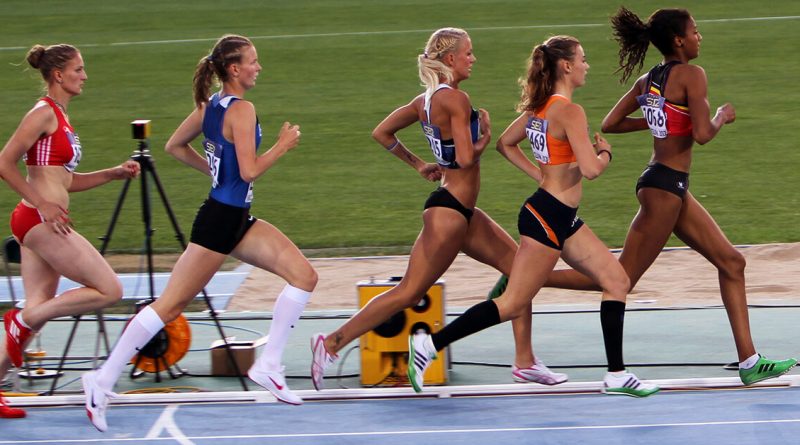The Evolution and Controversy of Women’s Sports Fashion
Tiya Antony
Fashion News Editor
Women started playing in the Olympics in 1900, but it was only in 1928 that they competed in the track and field events. At the time, females wore loose fitted-short sleeved tops and wide shorts which were similar to men’s clothing.

By 1992 female athletes started to wear crop tops or sports bras with bottoms that are similar to bathing suit bottoms, which was a dramatic shift. Some athletes did find the uniform to help their efficiency at running while others were pressured to wear the popular uniform. However, female athletes do feel that they became more sexualized during the 80s and 90s as their costume attracts more viewership and advertisement opportunities for female sports. Now professional female track stars and females wear tight performance spandex or high cut briefs to work out, which are meant to reduce drag and chafing.
The controversy surrounding women’s sports fashion came to the spotlight again when Nike revealed the 2024 Paris Olympic Games outfit designs, featuring a women’s leotard that were very high raised. Although some athletes conveyed their dislike towards the highly revealing clothing, others liked the design and track star Sha’Carri Richardson even modeled the designs. Nike cleared up the confusion by stating that the leotard is just one design of 50 total costume designs and were encouraging every athlete to tailor the designs to be the most comfortable for their needs.

During this year’s Olympics season, there was further controversy after many females in beach volleyball opted to wear leggings instead of bikini bottoms. Spectators expressed their like or dislike for leggings and other sportswear attire. This has always been a controversial issue as it was only in 2012 that the International Volleyball Federation allowed the uniform to include religious or cultural beliefs.
Of course there are multiple opinions, with some female athletes finding the tight outfits to be uncomfortable while others find it empowering. Fashion and efficiency are important to athletes because they must be equipped with proper clothing that is fashionable and efficient in reducing rubbing or chafing. We all know the saying: look good, feel good. Feeling confident allows anyone, especially performers, to put their best foot forward in the competition. However, it is true that the designs of women’s athletic wear are an issue when comparing to male designs that offer more clothing coverage and a looser fit.
It is important to allow all athletes to have more options in professional sportwear, such as at the Olympic Games, because athletes’ performance is determined by their comfort and confidence that largely comes from dressing.
Contact Tiya at antonyti@shu.edu

